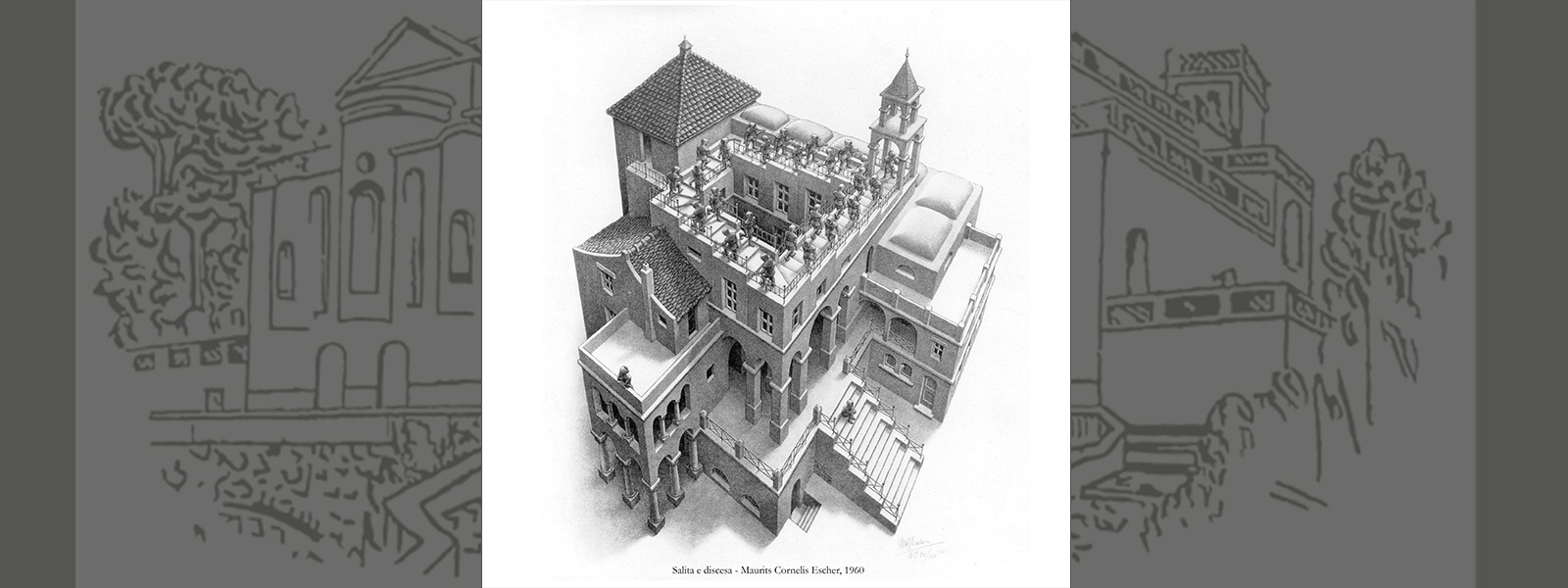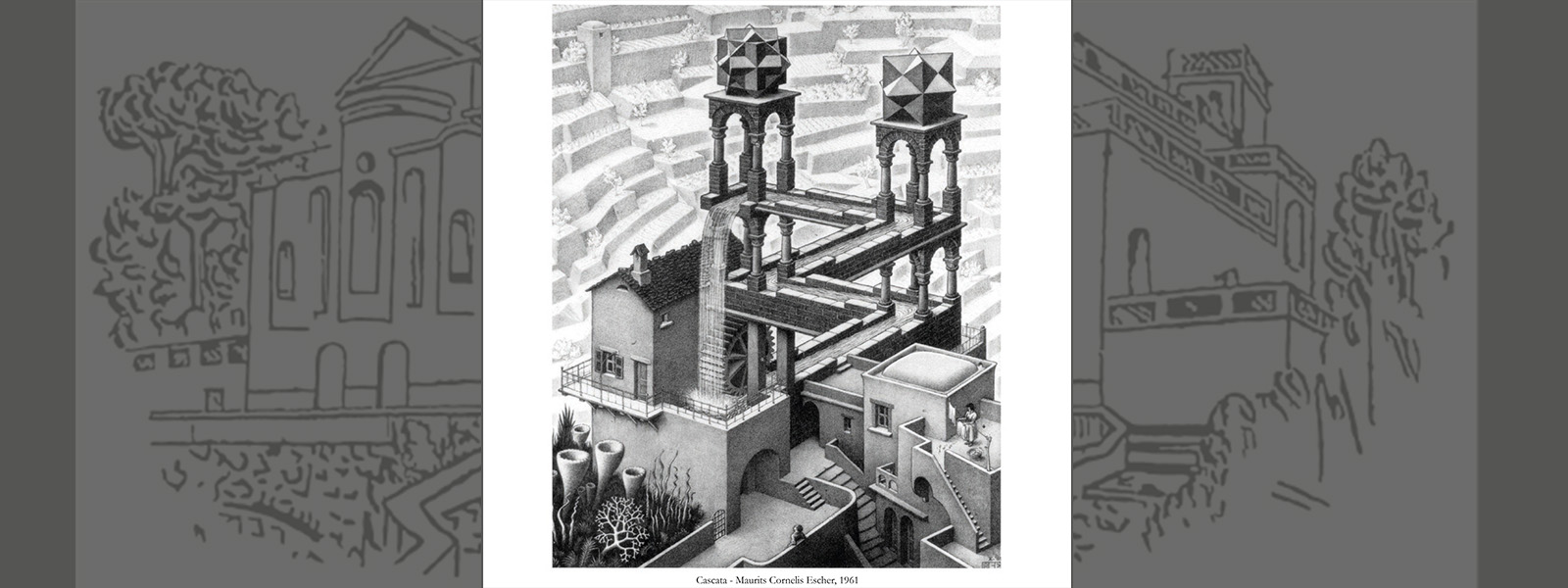M.C. Escher in Ravello
Maurits Cornelis Escher (1898-1972), the highly regarded Dutch artist, graphic designer and engraver, arrived in Italy in 1922 and the following year travelled through the Amalfi Coast, where he met his wife Jetta Umiker. They married in Viareggio in 1924. Escher was several times in Ravello and many of his landscape representations were made during his travels in Campania, Abruzzo, Tuscany, Calabria and Sicily.
On the Amalfi Coast between 1931 and 1934 he created various works inspired by Atrani, Positano, Scala, Torello and Ravello, famous for the use of optical effects, inverted perspectives and geometric constructions, a reinterpretation of the typical coastal houses, terraces and of the interweaving of alleys and steps that fascinated him.
Among these masterpieces we recall the scenarios of Ravello, having as their subject the sanctuary of Saints Cosma and Damiano, a typical agricultural house, the lion of Piazza Fontana Moresca and the village of Torello.
“I want to seek happiness in tiny things, like a tiny two-inch moss plant growing on a rock, and I want to try to do what I’ve wanted for a long time: copy these infinitely small things as precisely as possible.”
(Escher’s notes in Ravello)
Surely Escher was struck by the originality of Villa Barluzzi and must have known its owners. Clear references to the structure of the Villa may be detected in some of his works such as Ascent and descent of 1960 and Waterfall of 1961, as well as others specifically dedicated by the artist to the Villa.
As can be seen from the photographic documentation of some rooms, there were at least six Escher’s paintings numbered and signed by the author, displayed on the walls until the new owner of Villa Barluzzi took over.
They are all clearly inspired by the landscape of Ravello and the Amalfi Coast in which the articulation and alternation of open and closed spaces are unpredicable and architecture and nature merge into travel snapshots that are true graphic experiments.
Interiors of Villa Barluzzi with original works by M. C. Escher photographed by Domenico De Masi





